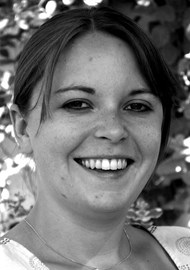The authors present a case series including six healthy participants prospectively recruited. All participants had no ocular pathology. The assessment included identification of their dominant eye for use in testing. A 60-4 SITA standard visual field assessment was completed in primary position. This assessment was repeated with a head turn 10 degrees and 30 degrees to the left and right, resulting in five 60-4 assessments. A mathematical model was used to calculate the optimal angle to maximise the peripheral visual field depending on the facial features of each individual. The 60-4 programme was then repeated a sixth time using this personal optimal angle of head turn. Total thresholds were calculated by summing the thresholds of all four quadrants. Of the six participants, four were male with a mean age of 39 years. The mean duration of the visual field programme was six minutes, 34 seconds. The visual field defects decreased when the face was turned away from the eye being tested and increased when turned towards the eye being tested. The mean optimal angle was 12 degrees. The authors acknowledge the small sample size as a limitation and the lack of randomisation of testing order. This study demonstrates the utility of using a head turn to maximise visual field assessment without the intrusion of facial anatomy.
Avoiding prominent facial features during perimetry
Reviewed by Lauren Hepworth
Head turn during visual field testing to minimize the influence of prominent facial anatomy.
CONTRIBUTOR
Lauren R Hepworth
University of Liverpool; Honorary Stroke Specialist Clinical Orthoptist, Northern Care Alliance NHS Foundation Trust; St Helen’s and Knowsley NHS Foundation Trust, UK.
View Full Profile



